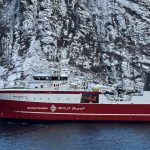In Panaji the state government has cautioned the tourists who head to Goa annually for a bit of sun and a splash in the sea – marine scientists have said the waters off the state’s coast contain alarmingly high levels of coliform bacteria caused by the release of untreated sewage. Scientists of the Goa-based marine research organisation National Institute of Oceanography (NIO) have said that the waters off Goa’s coast are “unsafe for recreational bathing and fishing”.
NIO’s marine scientist Dr N Ramaiah said that Central Pollution Control Board of India (CPCB) classified the waters along Indian coastal areas whether fit for commercial fishing or not. They said that after research it was found that recreation and bathing activities are unsafe when the faecal coliform (FC) count is 100 CFU/100 ml. The scientists have found the FC levels as high as 190 CFU/100 ml in certain locations of Goa waters.
Dr Ramaiah said that for assessing the water quality of the neretic regions off Goa and Ratnagiri along the central west coast of India, FC concentrations from the present study were compared with both Indian and USEPA (United States Environment Protection Agency) standards. He added that in both Mandovi and Zuari estuaries (both primary rivers in Goa), where fishing and tourist-related activities are sizable and long-term data collection was regular, we observed high counts of TC, FC, VC, SH and SA (forms of bacteria) in particular during monsoon due to increased land runoff.
The study revealed that almost all the sewage released in the rivers is untreated. Even one gram of stools contains millions and millions of coliform bacteria. So when it is present in water naturally the count goes up. Dr Ramaiah informed that pathogenic bacteria were detected even 20 km and 25 km offshore mainly due to dumping of raw or improperly treated sewage effluents either from land, fishing trawlers and/or ships in the anchorage.








